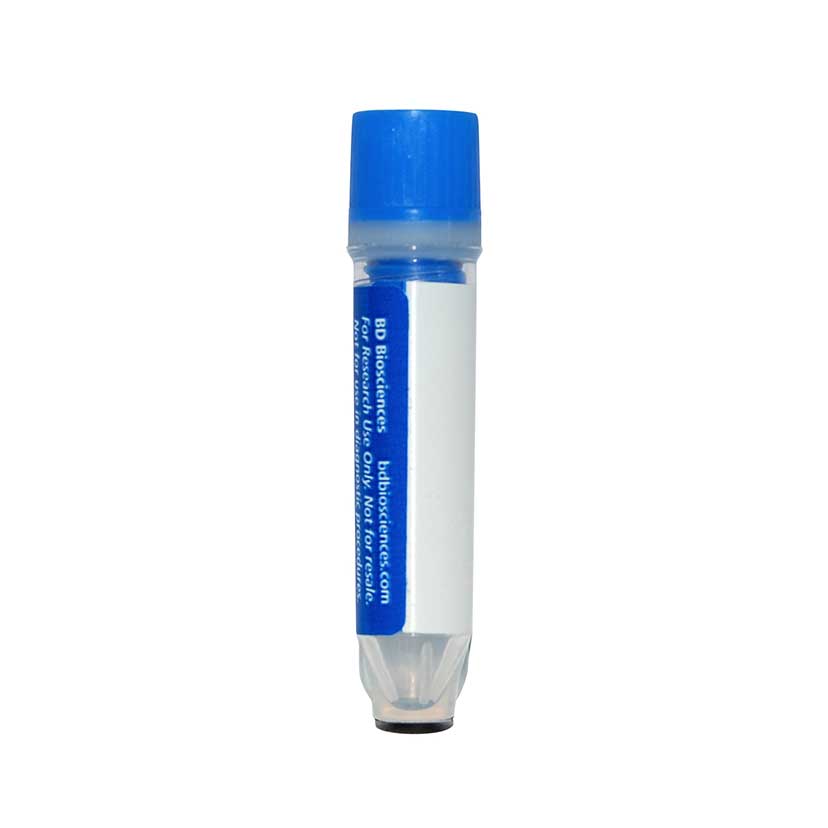-
Reagents
- Flow Cytometry Reagents
-
Western Blotting and Molecular Reagents
- Immunoassay Reagents
-
Single-Cell Multiomics Reagents
- BD® OMICS-Guard Sample Preservation Buffer
- BD® AbSeq Assay
- BD® Single-Cell Multiplexing Kit
- BD Rhapsody™ ATAC-Seq Assays
- BD Rhapsody™ Whole Transcriptome Analysis (WTA) Amplification Kit
- BD Rhapsody™ TCR/BCR Next Multiomic Assays
- BD Rhapsody™ Targeted mRNA Kits
- BD Rhapsody™ Accessory Kits
- BD® OMICS-One Protein Panels
- BD OMICS-One™ WTA Next Assay
-
Functional Assays
-
Microscopy and Imaging Reagents
-
Cell Preparation and Separation Reagents
Old Browser
This page has been recently translated and is available in French now.
Looks like you're visiting us from {countryName}.
Would you like to stay on the current location site or be switched to your location?
BD™ AbSeq Oligo Mouse Anti-Human CD282 (TLR2)
Clone 11G7 (RUO)


Regulatory Status Legend
Any use of products other than the permitted use without the express written authorization of Becton, Dickinson and Company is strictly prohibited.
Preparation And Storage
Recommended Assay Procedures
Put all BD® AbSeq Reagents to be pooled into a Latch Rack for 500 µL Tubes (Thermo Fisher Scientific Cat. No. 4900). Arrange the tubes so that they can be easily uncapped and re-capped with an 8-Channel Screw Cap Tube Capper (Thermo Fisher Scientific Cat. No. 4105MAT) and the reagents aliquoted with a multi-channel pipette.
BD® AbSeq tubes should be centrifuged for ≥ 30 seconds at 400 × g to ensure removal of any content in the cap/tube threads prior to the first opening.
Product Notices
- This reagent has been pre-diluted for use at the recommended volume per test. Typical use is 2 µl for 1 × 10^6 cells in a 200-µl staining reaction.
- Source of all serum proteins is from USDA inspected abattoirs located in the United States.
- Caution: Sodium azide yields highly toxic hydrazoic acid under acidic conditions. Dilute azide compounds in running water before discarding to avoid accumulation of potentially explosive deposits in plumbing.
- The production process underwent stringent testing and validation to assure that it generates a high-quality conjugate with consistent performance and specific binding activity. However, verification testing has not been performed on all conjugate lots.
- Illumina is a trademark of Illumina, Inc.
- Please refer to http://regdocs.bd.com to access safety data sheets (SDS).
- Please refer to bd.com/genomics-resources for technical protocols.
- For U.S. patents that may apply, see bd.com/patents.
Companion Products






The 11G7 monoclonal antibody specifically binds to human CD282, which is also known as Toll-like receptor 2 (TLR2). CD282 is expressed on monocytes, granulocytes, and dendritic cells. Toll-like receptors (TLRs) play a critical role in antimicrobial resistance. Moreover, TLRs have been shown to activate a number of signal transduction pathways which lead to the induction of genes involved in host defense. TLRs are type-1 transmembrane receptors characterized by the presence of extracellular leucine-rich repeat and intracellular Toll/IL-1 receptor domains. At least 12 mammalian TLRs have been identified, each recognizing a distinct bacterial or viral pathogen-associated molecular pattern, termed PAMP. Peptidoglycan from Gram-positive bacteria, lipoproteins and lipopeptides from several bacteria, glycophosphatidylinositol, lipoarabinomannan, porins, and zymosan from yeast have been reported to be the ligands for TLR2.
It has been reported that mAb 11G7 inhibits the production of inflammatory cytokines via certain TLR2 ligands including TLR2/TLR1 ligands, lipoarabinomannan and PAM3CSK4. However, 11G7 antibody does not inhibit the production of inflammatory cytokines with zymosan, a TLR2/TLR6 ligand. Please note that this application has not been tested at BD Biosciences Pharmingen.
Development References (5)
-
Kurt-Jones EA, Mandell L, Whitney C, et al. Role of Toll-like receptor 2 (TLR2) in neutrophil activation: GM-CSF enhances TLR2 expression and TLR2-mediated interleukin 8 responses in neutrophils. Blood. 2002; 100(5):1860-1868. (Biology). View Reference
-
Lien E, Sellati TJ, Yoshimura A, et al. Toll-like receptor 2 functions as a pattern recognition receptor for diverse bacterial products. J Biol Chem. 1999; 274(47):33419-33425. (Biology). View Reference
-
Medzhitov R. Toll-like receptors and innate immunity. Nat Rev Immunol. 2001; 1(2):135-145. (Biology). View Reference
-
Sandor F, Latz E, Re F, et al. Importance of extra- and intracellular domains of TLR1 and TLR2 in NFκB signaling. J Cell Biol. 2003; 162(6):1099-1110. (Clone-specific: Blocking, Inhibition). View Reference
-
Zhou S, Cerny AM, Bowen G, et al. Discovery of a novel TLR2 signaling inhibitor with anti-viral activity.. Antiviral Res. 2010; 87(3):295-306. (Clone-specific: Flow cytometry). View Reference
Please refer to Support Documents for Quality Certificates
Global - Refer to manufacturer's instructions for use and related User Manuals and Technical data sheets before using this products as described
Comparisons, where applicable, are made against older BD Technology, manual methods or are general performance claims. Comparisons are not made against non-BD technologies, unless otherwise noted.
For Research Use Only. Not for use in diagnostic or therapeutic procedures.